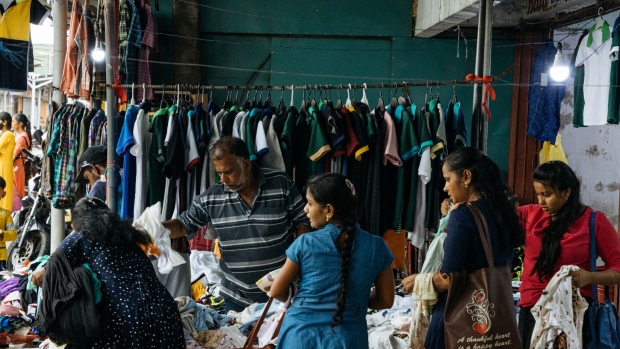May 31, 2023
Sri Lanka Cuts Rate First Time in 3 Years as Inflation Cools
, Bloomberg News

(Bloomberg) -- Sri Lanka unexpectedly cut its benchmark rate for the first time in nearly three years with the central bank targeting inflation easing to single-digits earlier, giving room to support the nation’s economic recovery that’s gotten a lift from bailout funds.
The Central Bank of Sri Lanka lowered the standing lending facility rate to 14% from 16.5%, according to a statement on its website on Thursday. None of the seven economists surveyed by Bloomberg had expected the move, with all predicting the rate to be kept unchanged.
“The Board arrived at this decision with a view to easing monetary conditions in line with the faster than expected slowing of inflation, gradual dissipation of inflationary pressures and further anchoring of inflation expectations, the central bank said in the statement.
“The commencing of such monetary easing is expected to provide an impetus for the economy to rebound from the historic contraction of activity witnessed in 2022, while easing pressures in the financial markets.”
Inflation is now projected to “decelerate notably in the period ahead, reaching single digit levels” in the early third quarter, the central bank said. Previously the monetary authority targeted the end of the year for single digit inflation while the International Monetary Fund wanted to see headline CPI slow to the target band of 4%-6% by early 2025.
The decision comes as price gains softened for a fourth month in May on record gains in the local currency and improving food and fuel supplies. The $3 billion IMF program, clinched in March, has helped the South Asian nation start to emerge from its worst economic crisis since gaining independence in 1948.
“The large appreciation of the exchange rate observed recently is yet to be reflected in the price levels, and it would quicken the disinflation process, as the prices of imported goods are expected to decline further,” the central bank said.
The central bank also recommended that the government consider phasing out the remaining restrictions on most items of goods imports.
“This will be a starter for lifting private sector credit demand,” said Sanjeewa Fernando, senior vice president of research at Asia Securities Pvt Ltd in Colombo. “The impact on the domestic debt restructuring would also be positive with treasury bill yields also likely to come off.”
Continued Recovery
The island nation’s continued recovery hinges closely on the government’s ability to restructure its debt in line with IMF criteria in order to keep unlocking funds under the program. Sri Lanka is yet to set a date to announce its restructuring blueprint that’s needed to advance negotiations with creditors.
The IMF sees Sri Lanka’s economy returning to growth next year as fresh funding is received and local authorities implement reforms to strengthen its fiscal health and price stability.
The central bank echoed this, saying the continuation of the IMF program, further assistance from the World Bank and Asian Development Bank, along with renewed investor appetite and advances in the debt talks would help ease the balance of payment constraints.
Reserves are estimated to have surpassed $3 billion, including the swap facility from the People’s Bank of China, the central bank said. This led to a relaxation of the cash margin deposit requirements imposed on selected imports in May, and further measures will be initiated to loosen capital flow restrictions, it added.
--With assistance from Shwetha Sunil.
(Updates throughout)
©2023 Bloomberg L.P.






